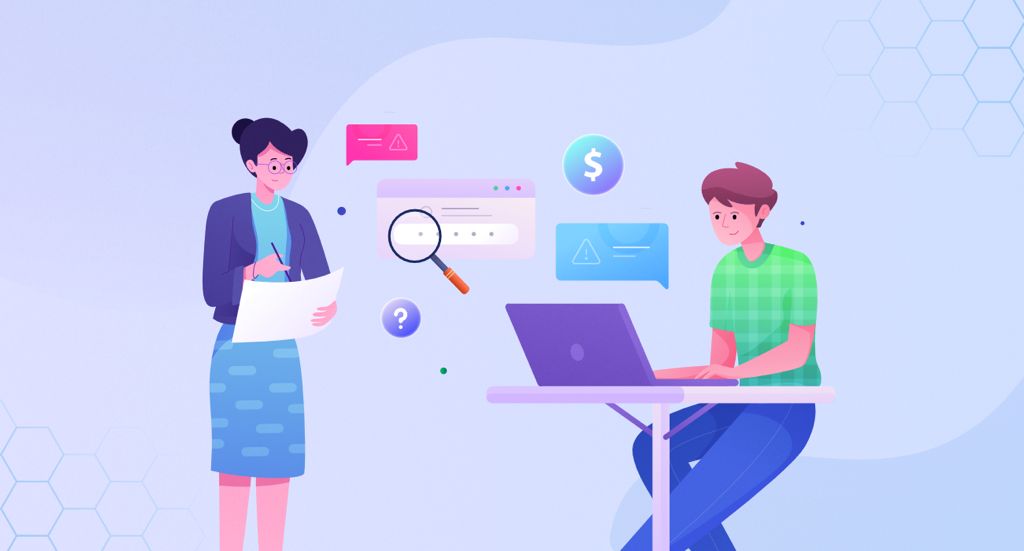Edge computing processes and analyzes data closer to the point of its generation. In addition, it uses small computing devices near the data source, such as sensors or smart devices. As a result, you no longer need to send it to a central location like a data center or the cloud resulting in faster data processing.
In this article, you will learn how edge computing enables faster data processing, leading to effective decision-making, and how you can maximize it.
1. Edge Computing - An Overview:
Let's say you're managing a fleet of delivery trucks. Each truck has an equipped sensor that collects data about the truck's location, speed, fuel consumption, etc. Conventionally, companies would send this data to a centralized cloud for analysis.
However, with edge computing, a small computing device (such as a microcontroller) can be placed inside each truck to analyze the data locally. This will provide real-time decision-making based on the data collected by reducing the time delay associated with sending data to a centralized cloud.
If one of the trucks is running low on fuel, the sensor inside the truck can analyze the data and alert the driver to refuel the truck. This helps prevent unnecessary delays and reduces the risk of the truck running out of fuel on the road.
Also, the processed data can be sent to a centralized cloud for further analysis to identify patterns in fuel consumption across the fleet, which can help optimize routes and reduce fuel costs.
Similarly, various industries can use edge computing to enable faster, more efficient, and more secure data processing and analysis. Again, no matter your business industry, this can lead to more effective decision-making and improved business outcomes.
2. How Edge Computing Works?
Edge computing works by bringing computing devices closer to the data source, typically within a few miles of where the data is generated or consumed.
Computing Devices: IoT sensors, Smart cameras, uCPE equipment, servers, and processors.
Technologies Used: IoT, Wireless Networking, Containerization, and Virtualization.
Given the devices and technologies used, here's a simple step-by-step technical explanation of how edge computing works:
- The sensors at the network's edge generate data and send it to a local computing device, such as a microcontroller or gateway.
- The local computing device processes and analyzes the data using software applications specifically designed for edge computing.
- Decision-making is either done locally at the edge or based on data analysis. Companies can utilize machine learning algorithms or other artificial intelligence techniques to accomplish this.
- The system then sends the processed data to a central location, such as a cloud server or data center, for further analysis or storage.
- Companies can utilize a hybrid architecture that combines edge computing and cloud computing to leverage the strengths of both models. This hybrid model conducts data processing and analysis at the edge and in the cloud.
3. Edge Computing vs. Cloud Computing:
Edge computing and cloud computing are different computing paradigms with strengths and weaknesses. Here are some key differences between edge computing and cloud computing:
| Edge Computing | Cloud Computing |
| Brings computing resources closer to the source of data. | Centralized computing resources in data centers located far away from the data source. |
| Enables real-time data processing with minimal latency. | Has comparatively high latency due to the distance between the data source and the data center. |
| Sending only the relevant data to a centralized location for further analysis reduces the required bandwidth. | Requires more bandwidth due to the need to transmit large amounts of data. |
| Limited scalability due to the constraints of the local computing resources. | Highly scalable and can handle large amounts of data. |
4. Edge Computing and Data Processing
Edge computing enables faster data processing by bringing the processing closer to the data source. Transmitting data to a centralized data center for processing, which can take time and result in latency issues, is eliminated.
With edge computing, the data is processed at the network's edge, closer to the device generating it. This results in faster data processing times and reduces latency. This, in turn, enables real-time data processing and analysis, which is critical in environments where real-time decision-making is necessary.
Edge computing is particularly useful in situations where the data generated by devices is time-sensitive. For example, in the case of predictive maintenance, edge computing can be used to monitor machine performance in real time, enabling the detection of anomalies and potential problems before they occur. This, in turn, can lead to cost savings by reducing unplanned downtime and maintenance costs.
5. Edge Computing and Data Analysis
Edge computing also enables faster data analysis by providing real-time data analysis. By processing data at the edge, businesses can analyze data in real time, enabling real-time decision-making. This is particularly useful when quick decisions are necessary, such as security threats or fraud detection.
Businesses can utilize edge computing to provide personalized customer experiences. For example, by analyzing real-time data, businesses can provide personalized offers to customers based on their preferences and past behaviors. This can result in increased customer satisfaction and loyalty.
Edge computing is also helpful in situations where large amounts of data need to be analyzed quickly. For example, in the case of video surveillance, edge computing can be used to analyze video footage in real time, enabling the detection of potential security threats. This can lead to increased security and reduced response times.
6. Edge Computing and Effective Decision-Making
Edge computing enables effective decision-making by providing real-time insights into data. By processing data at the edge, businesses can analyze data in real time, enabling real-time decision-making. This is particularly useful in situations where quick decisions are necessary, such as security threats or fraud detection.
Edge computing is also useful in situations where real-time data insights are necessary. For example, in the case of predictive maintenance, edge computing can be used to monitor machine performance in real time, enabling the detection of potential problems before they occur. This, in turn, can lead to cost savings by reducing unplanned downtime and maintenance costs.
7. Use Cases of Edge Computing in Data Processing and Analysis
Here are some examples of the use cases of edge computing for different industries with its crucial benefit:
Manufacturing Industry
Edge computing monitors data from sensors embedded in production machinery in manufacturing industries. This allows for real-time quality control and predictive maintenance.
Key Benefit: Improved efficiency and reduced downtime.
Healthcare Industry
Real-time data processing of patient data relies on the utilization of edge computing. This includes monitoring vital signs, detecting anomalies, and alerting medical staff in emergencies.
Key Benefit: Improved patient outcomes.
Automotive Industry
Edge computing enables real-time data processing, enhancing the efficiency of various applications, such as autonomous driving, vehicle inspections, and auto insurance claim processing.
Key Benefit: Ensures safe and efficient operation and prevents downtime.
Retail Industry
With edge computing, you can now analyze customer data in real-time—including data from in-store sensors, online transactions, and social media.
Key Benefit: Improved overall customer experience.
Software Industry
Edge computing improves the performance of CDNs by reducing latency and delivering content faster and more reliably to end-users.
Key Benefit: Faster and efficient decision-making.
Agricultural Industry
Helps in precision agriculture by allowing farmers to make more informed decisions about planting, fertilizing, and harvesting.
Key Benefit: Improved crop yield and waste reduction.
8. Challenges of Edge Computing
While edge computing offers many benefits, some challenges come with implementing this technology. Some of the main challenges of edge computing include:
Security
One of the main challenges of edge computing is security. With data being processed and stored on devices at the edge of the network, there is a risk of security breaches. As a result, these devices can be vulnerable to attacks, and securing them can be difficult.
Businesses need to implement appropriate security measures to protect against potential security breaches. This includes using secure communication protocols and encryption and regularly updating security software and firmware.
Data Management
Another challenge of edge computing is data management. With data being processed and stored on devices at the network's edge, it can be challenging to manage and analyze this data effectively. Therefore, businesses need to implement appropriate data management strategies to ensure that data is collected, analyzed, and stored effectively.
Integration with Legacy Systems
Integrating edge computing with legacy systems can also be a challenge. Many businesses have existing IT systems not designed to work with edge computing. As a result, businesses need to ensure that their legacy systems can integrate with edge computing solutions to ensure that they can take advantage of the benefits that this technology offers.
Scalability
Scalability is another challenge of edge computing. As the number of devices at the network's edge grows, businesses must ensure that their edge computing infrastructure can scale to meet the growing demand. Working with legacy systems not designed to be scalable can pose challenges, particularly for businesses.
Cost
Implementing edge computing can also be costly. Businesses need to invest in the necessary infrastructure to support edge computing, which can be expensive. In addition, businesses need to ensure they have the necessary skills and expertise to manage and maintain this infrastructure effectively.
Conclusion
With the growing need for effective analysis and increasing data generation, the future of edge computing appears highly promising. Moreover, with increased adoption in the coming years, this technology can drive innovation in the market, leading to new and more advanced solutions.
The entry of 5G networks can be a significant driver of edge computing, enabling faster connectivity between edge devices and cloud services. It's the right time for businesses across a wide range of sectors to see edge computing as an opportunity for growth and integration into their processes.















Leave a Reply